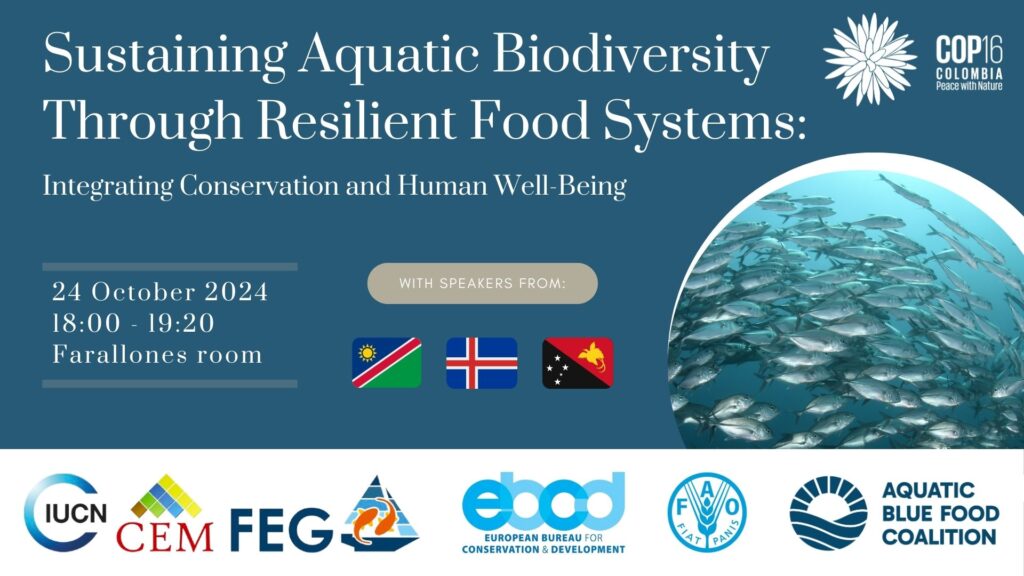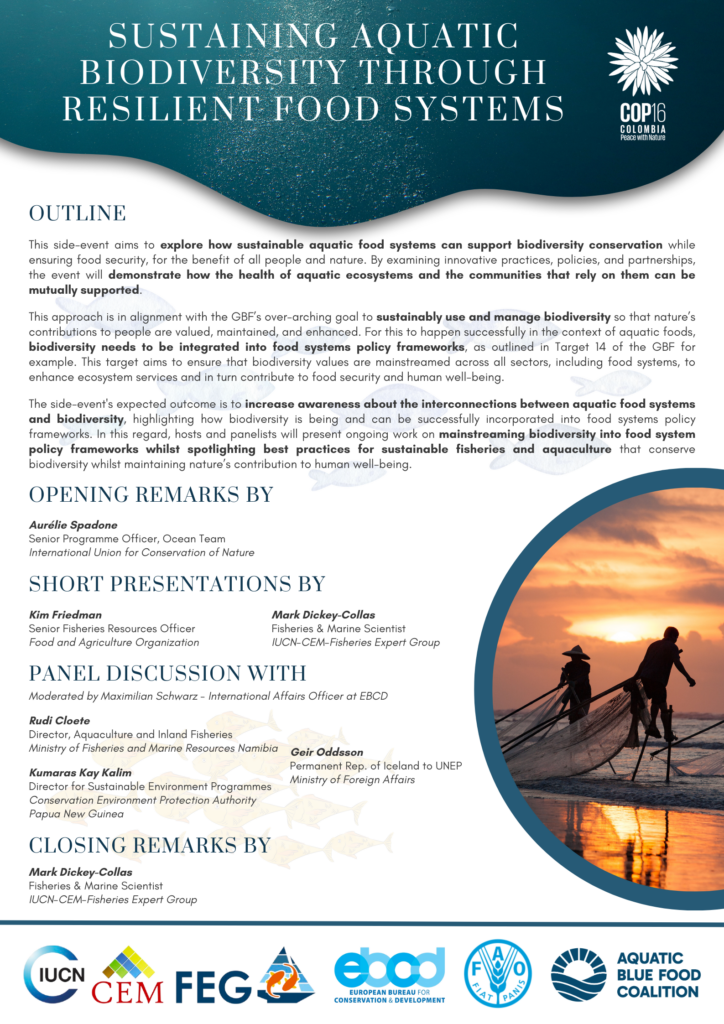
Engagement Hub / Events
Convention on Biological Diversity UNCBD COP16 2024

October 21, 2024 @ 08:00 – November 1, 2024 @ 17:00 BST
The Conference encompasses the Sixteenth meeting of the Conference of the Parties to the Convention on Biological Diversity (COP 16), the Eleventh meeting of the Conference of the Parties serving as the meeting of the Parties to the Cartagena Protocol on Biosafety, and the Fifth meeting of the Conference of the Parties serving as the meeting of the Parties to the Nagoya Protocol on Access to Genetic Resources and the Fair and Equitable Sharing of Benefits Arising from their Utilization. It will include a high-level ministerial segment.
COP 16 will be the first Biodiversity COP since the adoption of the Kunming-Montreal Global Biodiversity Framework at COP 15 in December 2022 in Montreal, Canada.
At COP 16, governments will be tasked with reviewing the state of implementation of the Kunming-Montreal Global Biodiversity Framework. Parties to the Convention are expected to show the alignment of their National Biodiversity Strategies and Action Plans (NBSAPs) with the Framework. COP 16 will further develop the monitoring framework and advance resource mobilization for the Global Biodiversity Framework. Among other tasks, COP 16 is also due to finalize and operationalize the multilateral mechanism on the fair and equitable sharing of benefits from the use of digital sequence information on genetic resources.
The 16th meeting of the Conference of the Parties to the Convention on Biological Diversity (COP 16) was suspended in the morning of Nov. 2 but not before countries agreed on an expanded role of Indigenous Peoples and local communities in saving biodiversity and a groundbreaking agreement on the operationalization of a new global mechanism to share benefits from digital genetic information.
The Aquatic Blue Food Coalition at UN CBD COP16

This side-event, Sustaining Aquatic Biodiversity Through Resilient Food Systems: Integrating Conservation and Human Well-Being, aims to explore how sustainable aquatic food systems can support biodiversity conservation while ensuring food security, for the benefit of all people and nature. By examining innovative practices, policies, and partnerships, the event will demonstrate how the health of aquatic ecosystems and the communities that rely on them can be mutually supported.
This approach is in alignment with the GBF’s overarching goal to sustainably use and manage biodiversity so that nature’s contributions to people are valued, maintained, and enhanced. For this to happen successfully in the context of aquatic foods, biodiversity needs to be integrated into food systems policy frameworks, as outlined in Target 14 of the GBF for example. This target aims to ensure that biodiversity values are mainstreamed across all sectors, including food systems, to enhance ecosystem services and in turn contribute to food security and human well-being.
Taking a holistic approach and touching on many Targets, this side-event will provide a platform for stakeholders to engage in meaningful dialogue, share knowledge, and highlight collaborative solutions to ensure that aquatic food systems support and enhance biodiversity while also providing critical nutritional benefits, aligning with the broader goals of the GBF.
The side-event is to increase awareness about the interconnections between aquatic food systems and biodiversity, highlighting how biodiversity is being and can be successfully incorporated into food systems policy frameworks. In this regard, hosts and panelists will present ongoing work on mainstreaming biodiversity into food system policy frameworks whilst spotlighting best practices for sustainable fisheries and aquaculture that conserve biodiversity whilst maintaining nature’s contribution to human well-being.

This side event has been made possible through the EBCD and includes the ongoing partnership with the Fisheries Expert Group of the IUCN Commission on Ecosystem Management (IUCN/CEM/FEG), FAO, CBD, and the Aquatic Blue Food Coalition.
Outcomes
Parties on the panel (Iceland, Namibia, and Papua New Guinea) all noted the importance of aquatic foods for their respective country’s communities, highlighting that sustainable aquatic foods are highly nutritious and have a low environmental and climatic impact in comparison to terrestrial proteins. They also all demonstrated innovative practices, policies, and partnerships – including the Aquatic Blue Food Coalition – that support aquatic ecosystem health while promoting food security, showcasing how they are mainstreaming aquatic biodiversity into food system policies and decision making to contribute to resilient aquatic ecosystems, human well-being, and livelihoods. Parties noted, for example, the work they are doing to break down ministerial silos, tackle invasive species, and innovate with low-trophic species. FAO and the IUCN/CEM/FEG presented ongoing work contributing to the integration of aquatic foods into decision-making.